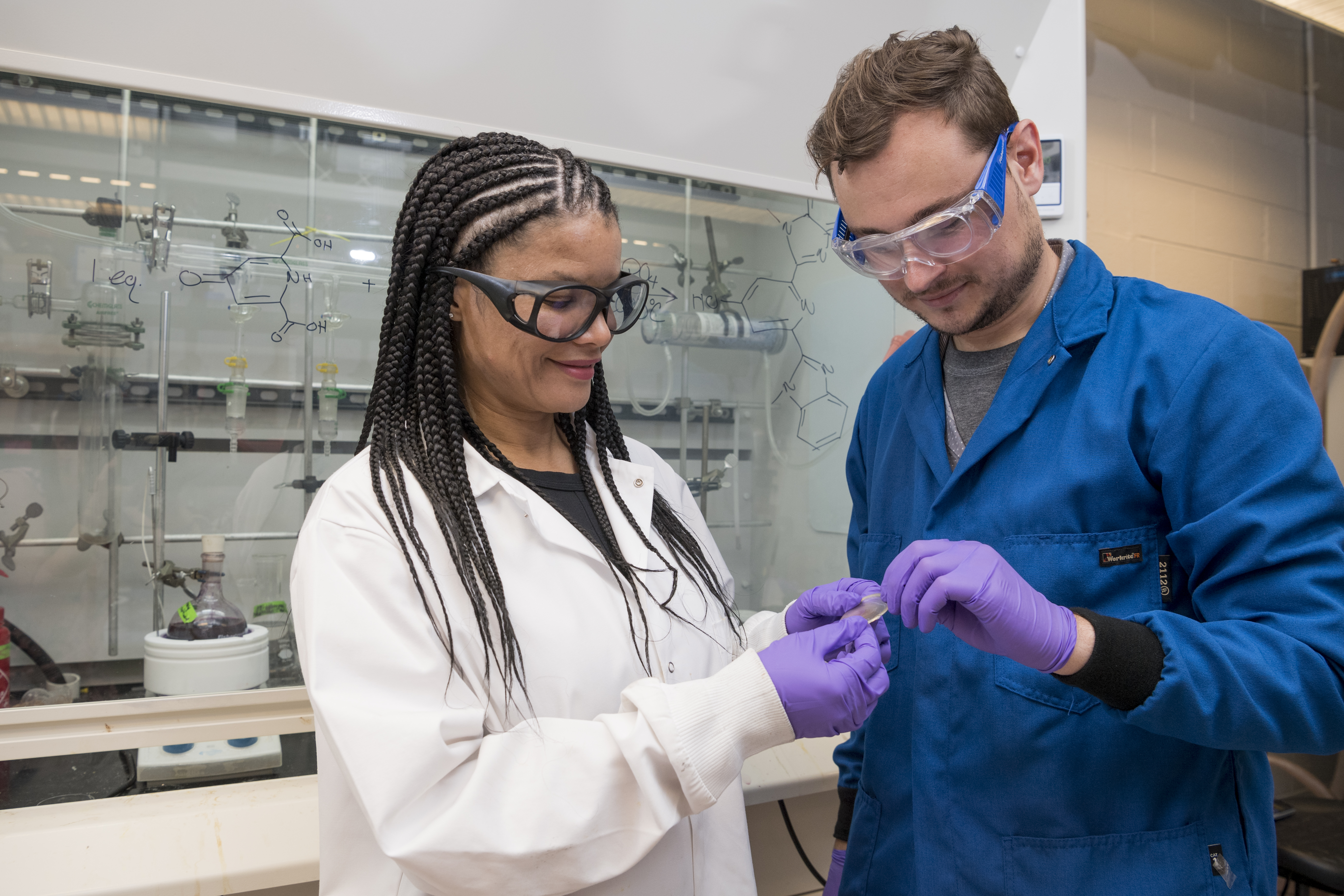Creating New Polymers, and Upcycling the Old Ones
-
-
MIT Technology Review
Recommended

Most of us either shudder at spider webs or admire their intricacy. LaShanda (James) Korley PhD ’05, sees something else entirely: inspiration for new polymers.

Now a professor of materials science and engineering as well as chemical and biomolecular engineering at the University of Delaware, Korley began her ongoing study of spider silk as a chemical engineering PhD student in MIT’s interdepartmental Program in Polymers and Soft Matter. “The foundation of my work is bioinspiration. We don’t necessarily try to mimic materials—we take inspiration from those materials and translate aspects of those systems into new material development,” Korley explains. For example, she is developing a material that changes shape in response to water—taking its cue from spider silk’s ability to “supercontract,” shrinking drastically and altering its mechanics, when it gets wet. A synthetic material with this property could be used in soft robotics or artificial muscle.
Korley’s research has progressed from simply designing nature-inspired polymers to creating those polymers more sustainably. One aspect of her work is building new polymers from renewable raw materials such as lignin in wood, and designing them to be reprocessed after serving their original purpose, further reducing their environmental impact.
What excites me is what we can achieve by being interdisciplinary and bringing together these levels of expertise to generate more sustainable materials.
More recently, she has taken on the challenge of plastics waste. “There are a lot of single-use plastics, and we don’t have enough landfill space,” Korley says. She and Thomas Epps, III ’98, SM ’99, are leading the Center for Plastics Innovation, one of six new Energy Frontier Research Centers funded by the US Department of Energy. “We are trying to think about ways to augment current mechanical recycling,” says Korley, describing it as an inefficient process that primarily degrades plastics waste into products with limited uses. Instead, the center will develop new chemical and catalytic processes for turning the waste from everyday plastics like water bottles into the building blocks for high-value products such as fuels, lubricants, and functional polymers.
Korley credits MIT—and her advisors Paula Hammond ’84, PhD ’93, and Gareth McKinley PhD ’91—with exposing her to many research disciplines. “MIT was a hub for inspiration and creativity,” she says. These days, Korley works closely with experts on topics as wide-ranging as catalysis, enzyme engineering, and manufacturing. She says, “What excites me is what we can achieve by being interdisciplinary and bringing together these levels of expertise to generate more sustainable materials.”
Photo (top): Korley in her lab at the University of Delaware with graduate research assistant Chase Thompson. Courtesy of the University of Delaware.
This article also appears in the January/February 2021 issue of MIT News magazine, published by MIT Technology Review.







